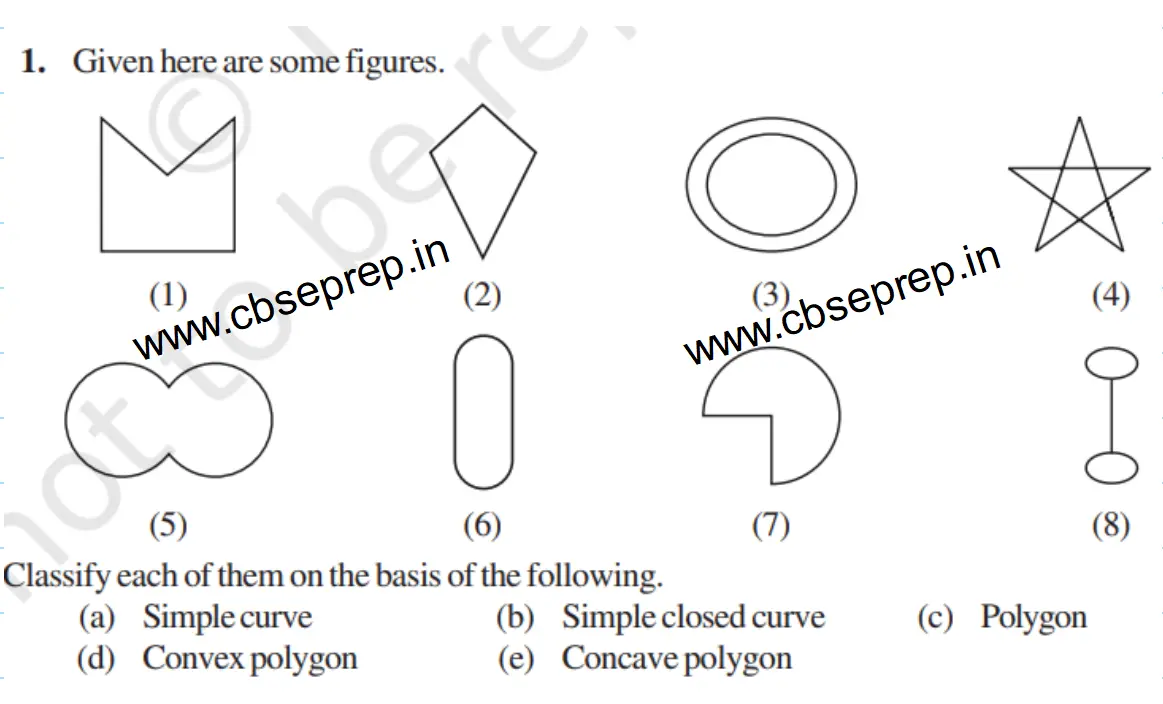NCERT Solutions Class 8 Maths Chapter 3 Excercise 3.1 Understanding Quadrilaterals
Class 8 Maths Exercise 3.1 Solutions
Class 8 Maths Exercise 3.1 in Hindi
Class 8 Maths Book Download in PDF
Class 8 Maths Chapter 3 Solutions
Class 8 Maths NCERT Solutions
Class 8 All Subjects Solutions
We have provided NCERT Solutions for class 8 Maths chapter 3 Excercise 3.1 in Hindi and English Medium for 2024-25 session.
The updated solutions of Excercise 3.1 Class 8th Maths chapter 3 strictly follow the New NCERT textbooks issued for academic session for 2024.25
8th Maths Exercise 3.1 Solution in Hindi and English Medium
Class 8 Maths Exercise 3.1 in English
Class 8 Maths Exercise 3.1 in Hindi
Class 8 Maths Chapter 3 in PDF
Class 8 Maths Chapter 3 Solutions
Class 8 Maths NCERT Solutions
Class 8 All Subjects Solutions
Class 8 Maths Chapter 3 Exercise 3.1 Solution
Class VIII Mathematics NCERT textbook Ex. 3.1 of chapter 3 Understanding Quadrilaterals in Hindi and English Medium updated for academic session 2024-25. Students can use exercise 3.1 solution online or download in PDF file format to use offline. Videos related to 8th Maths ex. 3.1 is given here with solution and explanation. All the questions are done step by step procedure one the basis of latest NCERT Book method.
Image
| Class 8: | Mathematics |
| Chapter 3 | Excercise 3.1 |
| Chapter Name | Udnerstanding Quadrilaterals |
| Content Type | Videos, Images and Text Format |
| Medium | Hindi and English Medium |
| Academic Session | 2024-25 |
Class 8 Maths Chapter 3 Excercise 3.1 Solutions understanding Quadrilaterals
Q. 1

Solution:-
(a) Simple Curve:- (1), (2), (5), (6), (7)
(b) Simple Closed Curve:- (1), (2), (5), (6), (7)
(c) Polygon:- (1), (2)
A simple closed curve made up of only line segments is called a polygon.
(d) Convex Polygon:- (2)
(e) Concave Polygon:- (1)
Explanation:-
What is Plane (simple) Curve
When you join a number of points without lifting a pencil from the paper (and without retracing any portion of the drawing other than single points), you get a plane curve.
In other words, a simple curve that changes direction but does not cross itself while changing direction.
Remember two things to form a simple curve.
- Don’t lift the pencil while joining the different point on paper.
- Don’t cross and retrace (go back over something) any portion of the drawing other than the single point.
Note:-
(3) is not a simple curve, as there are two circle, to draw a second circle we have to lift the pencel.
(4) is not a simple curve, as the line joining two points are crossing each other.
(8) is not a simple curve, as to draw such figure, one either has to lift the pencil or line joining the points will retrace each other.
Q. 2
What is regular polygon? State the name of a regular polygon of
(i) 3 sides
(ii) 4 sides
(iii) 6 sides

Answer:-
A regular polygon is both ‘equiangular’ (all angles equal) and ‘equilateral’ (all sides equal).
In simple words, regular polygon has its all angles equal and all its sides of equal lengths.
For example:- Square, equilateral triangle.
(i) 3 sides regular polygon = Equilateral triangle
(ii) 4 sides regular polygon = Square
(iii) 6 sides regular polygon = Regular Hexagon